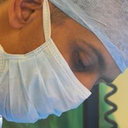The early diagnosis of typhoid fever prior to the Widal test and bacteriological culture results.
Palabras clave
Abstracto
In an attempt to evaluate various clinical and laboratory features available within 24 h of admission, prior to the Widal test and bacteriological culture results as potential diagnostic aids in typhoid fever, we undertook a retrospective unit-based case control study in 90 febrile adult and paediatric patients admitted to King Edward VIII Hospital, Durban, South Africa with an initial diagnosis of typhoid fever. A total of 30 blood culture-proven typhoid fever patients (cases) were matched to 60 patients confirmed as not having typhoid fever (controls) by age, sex, race and severity of illness on admission. Features significantly associated with a final diagnosis of typhoid fever were: a pre-admission duration of fever > or = 7 days (odds ratio (OR) 6.9); hepatomegaly (OR 3.2); a normal leucocyte count (OR 10.8); a leucocyte count of < 10.0 x 10(3)/mm3 (OR 30.2); and leucopenia due to absolute neutropenia with a relative lymphocytosis (OR 11.8). Although the sensitivity, specificity and predictive values of any of these features cannot be used reliably to distinguish typhoid fever from other non-typhoidal febrile illness, it is concluded that leucopenia due to absolute neutropenia with relative lymphocytosis, when present, is highly suggestive of typhoid fever. A leucocyte count of > 10.0 x 10(3)/mm3 (OR 0.03) provides strong presumptive evidence against such a diagnosis.


